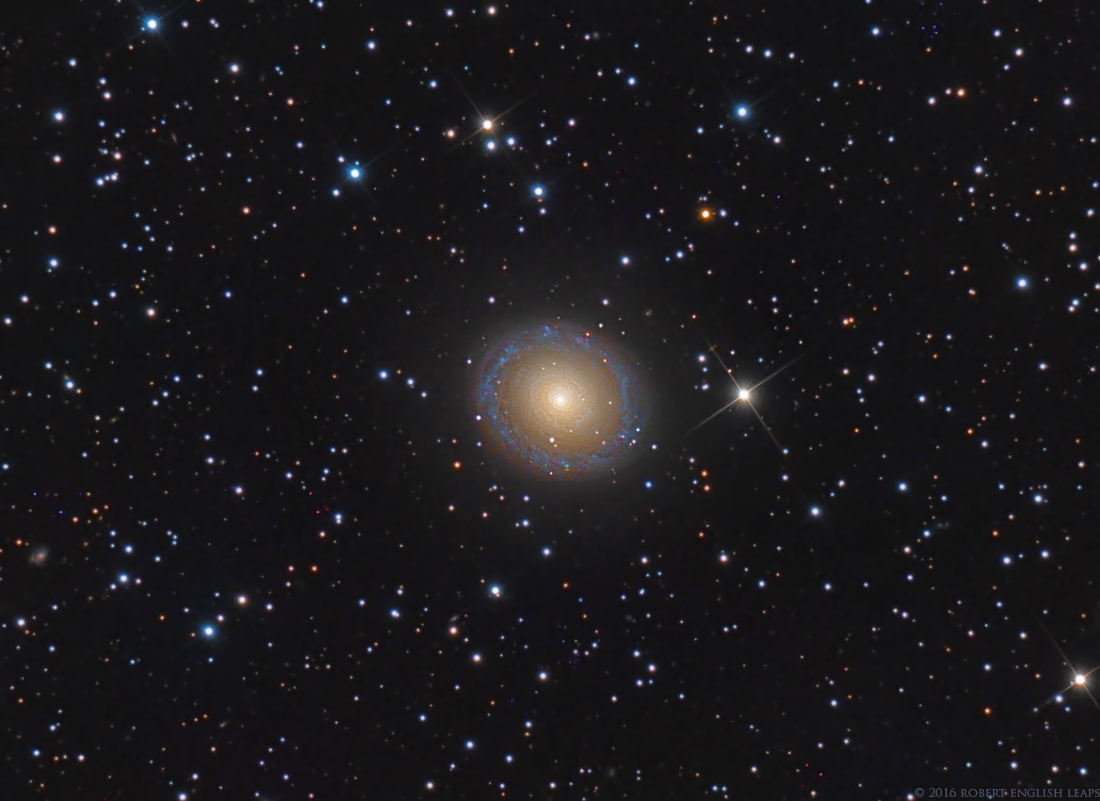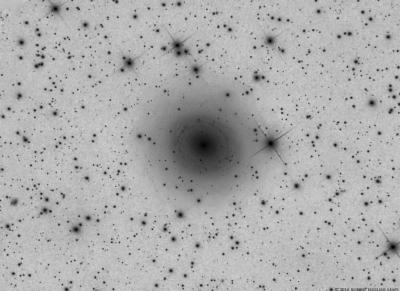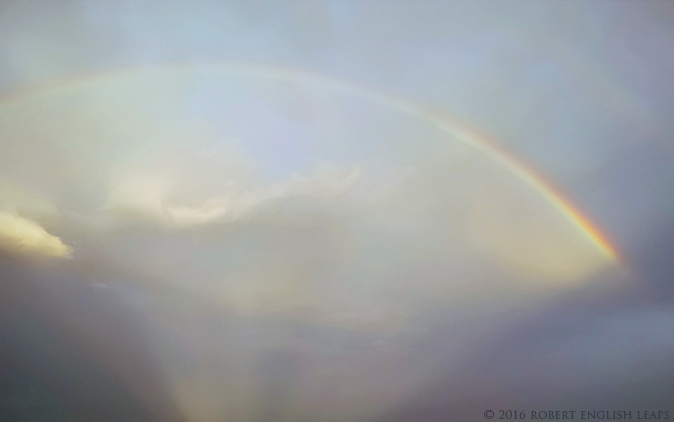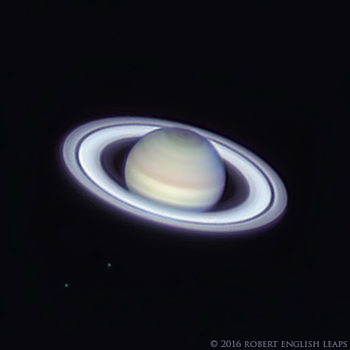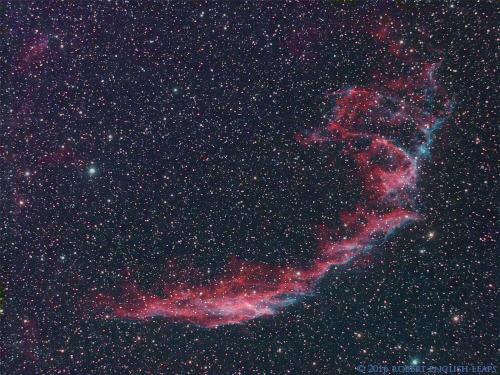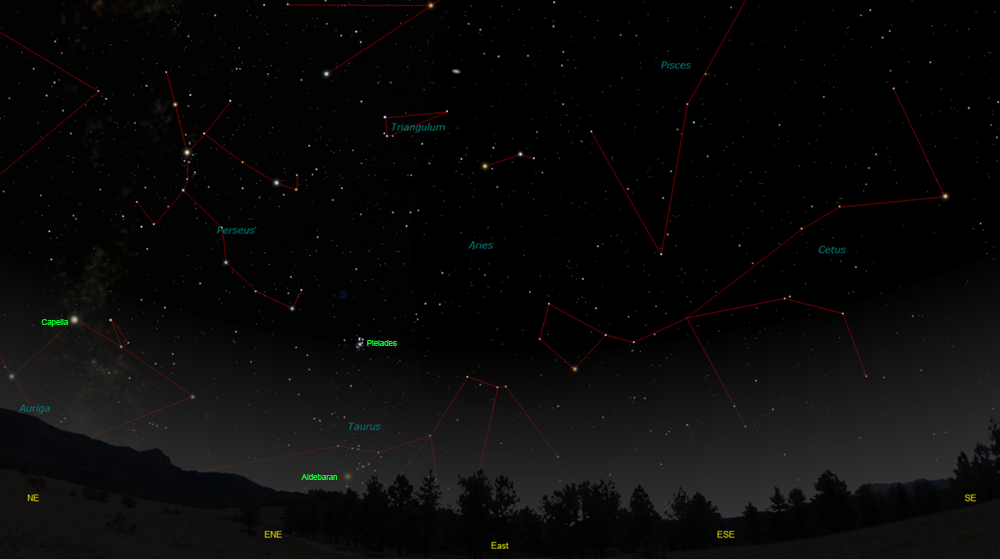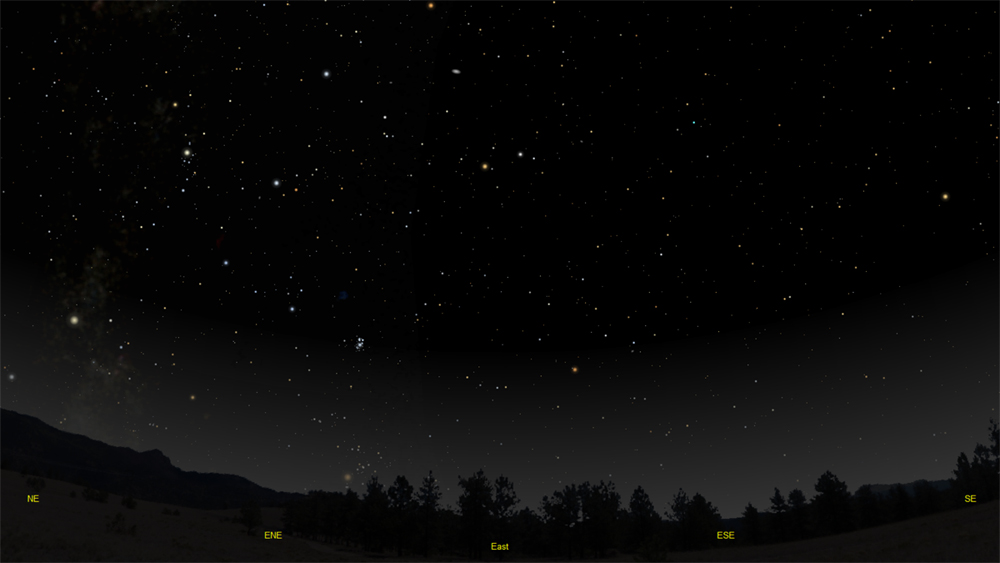The purpose of this feature is to give scout leaders, educators and naturalists an idea of some of the natural events coming up each month. We will try to cover a variety of natural events ranging from sky events to calling periods of amphibians, bird and mammal watching tips, prominent wildflowers and anything else that comes to mind. We will also note prominent constellations appearing over the eastern horizon at mid-evening each month for our area for those who would like to learn the constellations. If you have suggestions for other types of natural information you would like to see added to this calendar, let us know! Note: You can click on the hyperlinks to learn more about some of the featured items. To return to the Calendar, hit the "back" button on your browser, NOT the "back" button on the web page. All charts are available in a "printer friendly" mode, with black stars on a white background. Left clicking on each chart will take you to a printable black and white image. Please note that images on these pages are meant to be displayed at 100%. If your browser zooms into a higher magnification than that, the images may lose quality. Though we link book references to nationwide sources, we encourage you to support your local book store whenever possible.
Notes and Images From August and September 2016 September brought some memorable views of the night sky. While in Alabama doing bird surveys, I had beautiful views of Mercury and the waning crescent Moon rising in the eastern sky. Towards the end of the month, I glimpsed the ghost-like Veil Nebula in Cygnus in my 10x50 binoculars. There's more on that in the "Sky Events for October" section below. But before all of that, at the very end of August, I spent a couple of nights imaging a distant unbarred spiral galaxy in Pegasus. NGC 7217 appears small, but is rich in detail and structure. It's always nice to see the constellation of Pegasus rising in the early evening this time of year. With it comes a relief from the hot and humid summer days and the return of crisp fall nights. It also brings with it a host of galaxies, which seem to fly from the hooves of the winged horse. NGC 7217 is one of those galaxies.
This galaxy is about 50 million light-years away. The bright center is not hard to see in small telescopes, but the brightness falls off very quickly as you move away from the center. Much detail can be seen in the center of the galaxy, and to fully appreciate it you may want to view the Hubble image here. The Hubble image does not include the outer ring of young blue stars. To compare the Hubble image to our image, rotate our image 180 degrees).
The most difficult part of the galaxy to see is a faint, roughly spherical halo of stars that extends out to the bright star to the right of the galaxy in the image above. It has been suggested that this spherical outer shell is the result of a merger between NGC 7217 and another galaxy at some time in the distant past. The spherical shell can be seen better in the small negative image at right, which has been processed to show faint structures.
Driving back from a family reunion in Bell Buckle on September 10th, we saw an interesting rainbow. A very strong front had brought a wave of thunderstorms through Nashville, and as we drove back home we drove through the storms. As we emerged from the storms back into the sunlight, we exited I-24 at Murfreesboro. As we exited and came around the cloverleaf exit we saw the rainbow at right. All I had was my cell phone, but I stopped and took an image anyway. It was a faint double rainbow (note the reversed colors in the faint secondary bow), but what caught my attention were the spoke-like rays converging at the center of the rainbow at the anti-solar point. These spokes looked very much like crepuscular rays that are sometimes seen as the Sun rises or sets, but these were on the opposite side of the sky from the Sun. Looking up the phenomena when I was back home, I found that these spokes are not too unusual, and are caused by foreground clouds shadowing parts of the cloud where the rainbow is forming. Because of that, the colors in the rainbow are muted. The shadows converge on the anti-solar point due to perspective. But it was an interesting sight, and the sky reminded me of the play of light in an old 19th century landscape painting. I imaged this female Spinybacked Orbweaver in Alabama. In Common Spiders of North America, Richard Bradley says of the species, "This is perhaps the most distinctive American spider." The females appear in three color phases, one of which the yellow phase shown below. Males are much smaller and rarely seen, and they do not have the spiny projections that are seen on the female.
We enjoy teasing out the meaning in scientific names of species. The scientific name of this species is Gasteracantha cancriformis. "Gaster" refers to the abdomen while "acantha" derives from thorn. So the genus name refers to the thorn-like projections on the abdomen. "Cancri" refers to a crab (as does the constellation Cancer) and "formis" refers to form. So the species name refers to the crab-like form of the spider. Some suggest that the spiny projections help these spiders avoid predation by birds. I did not see the egg case of this spider, but it is said to be constructed of different colors of silk and includes a longitudinal dark green stripe. The web is sometimes decorated with small white tufts of silk. This may attract prey.
Sky Events for October 2016: The Orionid Meteor Shower peaks on the morning of October 21st. Unfortunately, the waning gibbous Moon will tend to wash things out in the sky around the radiant. Evening Sky: Look for bright Venus low in the west-southwest about 20 minutes after sunset at the beginning of the month. It will gradually set later and later after the sun as the month progresses. Mars makes its way across Sagittarius this month. Look for it about 28 degrees above the southern horizon at dusk. By the end of the month the apparent size of Mars will dwindle to below 8 seconds of an arc in diameter.
Saturn is in Ophiuchus, above and to the right of Mars as you are facing south. Look for it about 25 degrees above the southwest horizon. The tilt of the rings has now opened to 26 degrees, and the view is spectacular in any size telescope. The globe of Saturn is now 15.9 seconds of an arc in diameter. Saturn is highest above the horizon about dusk, so if you're planning on viewing it with a telescope you'll want to view it as soon as it becomes visible in the southern sky. All times noted in the Sky Events are for Franklin, Tennessee and are in Central Daylight Time. These times should be pretty close anywhere in the mid-state area. Morning Sky: Mercury remains visible for the first part of October after its fine apparition in September. Start looking for it about 45 minutes before sunrise low in the east. Jupiter passes into the morning sky this month, and begins to be visible around October 8th below Mercury. The two planets will appear to pass each other on October 11th.
Constellations: The views below show the sky looking east at 9:30pm CDT on October 15th. The first view shows the sky with the constellations outlined and labeled. Star and planet names are in green. Constellation names are in blue. The second view shows the same scene without labels. Prominent constellations include Andromeda, Perseus, Triangulum, the Triangle, Aries, the Ram, and Cetus, the Sea Monster. Auriga, the Charioteer, with its bright star Capella, and Taurus, the Bull, are rising in the northeast. The bright star Aldebaran, a red giant representing the eye of the bull, should just be rising. Above Aldebaran, look for the Pleiades, a beautiful open star cluster. Also called the "Seven Sisters," it has been known since antiquity. In Japan it is known as Subaru, and the Subaru automobile is named for this cluster. Before the Gregorian calendar reform in 1582, the Pleiades culminated around midnight on October 31st, and it has been traditionally associated with Halloween.
Fall is a great time to search for the very faint Veil Nebula. This ghostly supernova remnant is high in the sky this time of year, and you can sometimes spot it with 10x50 binoculars on very clear moonless nights. You won't see the fine detail or the colors you see in the image at right, but it's fun to try and catch the faint smoky wisps against a starry background. You can find a binocular finder chart and tips for spotting the Veil Nebula here. I've spotted the eastern side of the nebula in the fall. I don't think I've ever spotted the western side with binoculars. The embedded bright star 52 Cygni seems to dazzle my eyes too much to see the nebulosity there. Using averted vision and looking to one side of the nebula's position may help you spot it. The word nebula is from the Latin word meaning little cloud, or mist. That's exactly what the eastern side of the Veil looks like in binoculars on a very clear night. On Learning the Constellations: We advise learning a few constellations each month, and then following them through the seasons. Once you associate a particular constellation coming over the eastern horizon at a certain time of year, you may start thinking about it like an old friend, looking forward to its arrival each season. The stars in the evening scene above, for instance, will always be in the same place relative to the horizon at the same time and date each October. Of course, the planets do move slowly through the constellations, but with practice you will learn to identify them from their appearance. In particular, learn the brightest stars for they will guide you to the fainter stars. Once you can locate the more prominent constellations, you can "branch out" to other constellations around them. It may take you a little while to get a sense of scale, to translate what you see on the computer screen or what you see on the page of a book to what you see in the sky. Look for patterns, like the stars that make up the constellation of Perseus. The earth's rotation causes the constellations to appear to move across the sky just as the Sun and the Moon appear to do. If you go outside earlier than the time shown on the charts, the constellations will be lower to the eastern horizon. If you observe later, they will have climbed higher. To observe faint objects, it's always better to wait until they are high in the sky. As each season progresses, the earth's motion around the sun causes the constellations to appear a little farther towards the west each night for any given time of night. The westward motion of the constellations is equivalent to two hours per month. Recommended: Sky & Telescope's Pocket Star Atlas is beautiful, compact star atlas. A good book to learn the constellations is Patterns in the Sky, by Hewitt-White. You may also want to check out at H. A. Rey's classic, The Stars, A New Way to See Them. For skywatching tips, an inexpensive good guide is Secrets of Stargazing, by Becky Ramotowski. A good general reference book on astronomy is the Peterson Field Guide, A Field Guide to the Stars and Planets, by Pasachoff. The book retails for around $14.00. The Virtual Moon Atlas is a terrific way to learn the surface features of the Moon. And it's free software. You can download the Virtual Moon Atlas here. Cartes du Ciel (described in the monthly notes above) is a great program for finding your way around the sky. It is also free, and can be downloaded here. Apps: We really love the Sky Safari 5 Pro. It is available for both iOS and Android operating systems. There are three versions. The Pro is simply the best astronomy app we've ever seen. The description of the Pro version reads, "includes over 27 million stars, 740,000 galaxies down to 18th magnitude, and 620,000 solar system objects; including every comet and asteroid ever discovered."For upcoming events, the Sky Week application is quite nice. Available for both I-phone and Android operating systems. A nother great app is the Photographer's Ephemeris. Great for finding sunrise, moonrise, sunset and moonset times and the precise place on the horizon that the event will occur. Invaluable not only for planning photographs, but also nice to plan an outing to watch the full moon rise. Available for both androids and iOS.
Amphibians:
Listen for Southern Leopard Frogs calling during their fall breeding period. Listen also for Spring Peepers to call from patches of woods. Upland Chorus Frogs sometimes give a very dry, raspy version of their call in October. Warm-weather species like treefrogs seldom call now, but you can sometimes find them foraging in trees and shrubs. You can locate many of the frogs and toads that have been calling more frequently earlier in the year by driving the back roads slowly on rainy nights. This is a two person job. One person watches the road for amphibians and one person looks out for other vehicles. Continue to look for salamander species that breed in the fall, like the Marbled Salamander.
Recommended:
The Frogs and Toads of North America,
Lang Elliott, Houghton Mifflin Co. Archives (Remember to use the back button on your browser, NOT the back button on the web page!)
Natural Calendar February 2016 Natural Calendar December 2015 Natural Calendar November 2015 Natural Calendar November 2014 Natural Calendar September 2014 Natural Calendar February 2014 Natural Calendar December 2013 Natural Calendar September 2013 Natural Calendar December 2012 Natural Calendar November 2012 Natural Calendar September 2012 Natural Calendar February 2012 Natural Calendar December 2011 Natural Calendar November 2011 Natural Calendar September 2011 Natural Calendar December 2010 Natural Calendar November 2010 Natural Calendar September 2010 Natural Calendar February 2010 Natural Calendar December 2009 Natural Calendar November 2009 Natural Calendar September 2009 Natural Calendar February 2009 Natural Calendar December 2008 Natural Calendar November 2008 Natural Calendar September 2008 Natural Calendar February 2008 Natural Calendar December 2007 Natural Calendar November 2007 Natural Calendar September 2007 Natural Calendar February 2007 Natural Calendar December 2006 Natural Calendar November 2006 Natural Calendar September 2006 Natural Calendar February 2006 Natural Calendar February 2003 Natural Calendar December 2002 Natural Calendar November 2002 Nature Notes Archives: Nature Notes was a page we published in 2001 and 2002 containing our observations about everything from the northern lights display of November 2001 to frog and salamander egg masses. Night scenes prepared with The Sky Professional from Software Bisque All images and recordings © 2016 Leaps.
|
|
